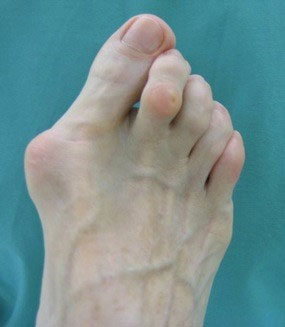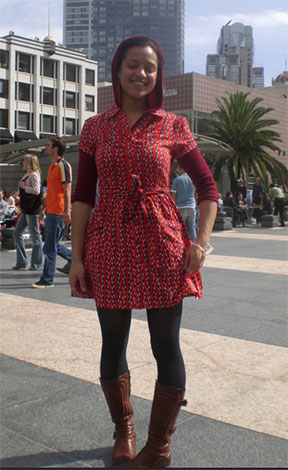Valgus, Varus, Vargus… What is It?
- Whitney Lowe
When describing postural alignment issues there are two terms that many people get mixed up and consequently miss their biomechanical significance. The terms of valgus and varus refer to alignment of bony segments. Some mistakenly state they are defined by angulations at the knee. However valgus and varus angulations can occur in numerous locations. Let’s take a look at how they are defined and where they occur most commonly.
A varus angulation is one in which the distal portion of a bony segment deviates in a medial direction. A valgus angulation is just the opposite. In a valgus angulation the distal portion of the bony segment deviates in a lateral direction. We’ll look at two examples of varus and valgus angulations in the lower extremity to show how they can cause certain problems.
Hallux Valgus- Hallux valgus deformities are caused by a lateral deviation of the distal region of the big toe (hallux). Figure 1 shows what the hallux valgus angulation looks like. A hallux valgus angulation can be caused by wearing pointed shoes with a narrow toe box, but can result from other factors as well. It occurs gradually over time and is seen more often in women than in men.

One of the reasons it may occur more often in women is wearing of high heels. When wearing high heel shoes, the foot is thrust into the front of the shoe. If the front of the shoe is very narrow it crowds the distal hallux and forces it toward the other toes (in a lateral direction). As the distal portion of the hallux is driven in a lateral direction it will force the distal portion of the first metatarsal head in a medial direction.
As the distal metatarsal head goes in a medial direction, it pushes outward and against the edge of the shoe. The irritation created by the metatarsal head pressing on the shoe will often cause an enlarged and thickened callus to form. This callus is known as a bunion. The bunion may become painful and irritated after some time, especially if pressure is maintained on it.
A hallux valgus deformity may have significant ramifications for soft tissue problems in other areas as well. One of the most important things that the hallux does is to help provide forward propulsion during the push-off phase of the gait. The hallux is also very important for preventing excessive inward rolling of the foot (overpronation).
If the hallux is deviating away from its normal position, it does not have the mechanical ability to perform these tasks correctly. If the hallux is not preventing overpronation, the individual may develop a number of other problems including plantar fasciitis, shin splints, or other ankle or knee pathologies.
Genu Varum- Genu varum (also called varus genu) is the postural distortion commonly referred to as bow-legs. In this postural deviation the varus angulation refers to the tibia. Therefore, it is also referred to as tibial varus. Figure 2 shows the medial deviation of the distal portion of the tibia. Since the tibia is deviating in a medial direction the weight of the body is not coming straight down on the foot. It is coming down more over the lateral edge of the foot. Weight coming down over the outside edge of the foot can cause the foot to have a varus angulation (calcaneal varus) as well.

Many of the surrounding soft tissue structures like the lateral ankle ligaments and the peroneal muscles may have to compensate for the unbalanced forces acting on the foot from the subsequent calcaneal varus. The knee joint may also be affected from the genu varum. Increased compressive force may be placed on the medial meniscus from genu varum. In addition, genu varum has frequently been implicated as a contributing factor to iliotibial band friction syndrome because of the additional tensile stress it places on the iliotibial band.
These postural distortions of the lower extremity are often quite difficult to change because the forces that have caused them to develop are ingrained in movement patterns that are not easy for the individual to alter. It is not imperative to “fix” or “correct” every postural alteration in the body. In fact, many people can exist with these postural alterations without pain and dysfunction. However, sometimes they can play a significant role in soft-tissue distress so it is valuable to recognize the mechanical implications of them when present.

